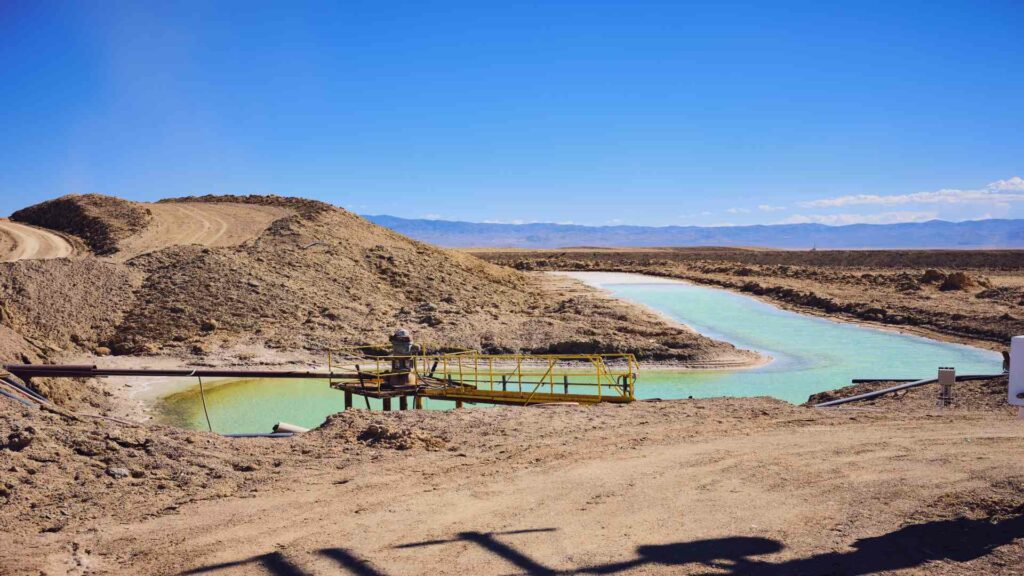Boron Fluoride
Boron and Fluorine have several forms, mono fluoride, boron trifluoride and diboron tetrafluoride. Boron monofluoride is often referred to as Boron fluoride. Boron trifluorid is a stable gas at low temperature. While diboron tetrafluoride boils at -34 degrees centigrade. Boron fluoride compounds have several applications in health and remediation technology and agricultural fields.

Boron Fluoride
Boron Monofluoride
Boron monofluoride has the formula BF. The molecule consists of two boron atoms and one fluorine atom, hence the “mono.” It is a colorless pyrophoric gas. BF is a Lewis acid, a molecule that accepts an electron pair, and it is thus an electron donor.
How is Boron capable of Forming Multiple Bonds with Fluorine?
The Boron (B) electronic configuration is [Ar]3d104s .The 3d electrons are not involved in bonding and are instead involved in the inert pair effect. This means that the 3d electrons are in the same quantum state as the 4s electrons in the ground state. This causes a low level of nuclear charge, which is responsible for the molecule’s stability. It can be viewed as a boron atom with an incompletely filled 4p subshell and a complete 3d subshell.
Boron Trifluoride
Louis Jacques Thenard & Joseph Louis Gay–Lussac discovered Boron trifluoride back in 1808. They were trying out fluoric acid, also known as hydrofluoric or “fluoric acid,” by combining calcium and verified arachidic acid. Fluoric gases were created when the resulting vapors failed in their attempt to etch through the glass.
Boron trifluoride is most notably used as a reagent in organic synthesis, typically Lewis acid. Examples include initiation of polymerization reactions of unsaturated compounds, such as polyethers, and as a catalyst in some isomerization, acylation, alkylation, esterification, dehydration, condensation, Mukaiyama aldol addition, and other reactions.
Other uses that boron trifluoride is less commonly used for include: In ion implantation as a dopant; for epitaxially-grown silicon, p-type dopant; in sensitive neutron detections in ionization rooms and devices to monitor radiation levels on the Earth’s surface; in the fumigation process with methyl bromide; as a flux to solder magnesium, and to prepare diborane boron trifluoride.
Structure of Boron and Fluoride
B–F bonds are polar and have an unusually low bond dissociation energy than other diatomic molecules. This property is manifested in the B–F bond length of only 26 Å and the very weak bond dipole moment of 0.08 debye. The weak bond polarises the molecule such that the O–F bond length is 1.45 Å and the O–F–O angle is 105°, compared to 1.06 Å and 100° for the diatomic molecules N2 and CO.
This polarisation is caused by repulsion between the lone-pair electrons on the fluorine atom and the filled σ*2px antibonding orbital of the oxygen atom. This repulsion is a small thing, but together all such repulsions due to all of the electrons are the reason for the larger-scale energy differences in the molecule.
The dipole moment of BF is inverted, meaning fluorine has a positive charge, although it is the more electronegative element. Thus, the orbitals of the 2sp bond of Boron are reoriented and have a higher electron density. Polarization can also be explained without back bonding, or the transfer of electrons within an atom’s orbital.
Preparations
Bypassing boron trifluoride gas at 2000 °C over a boron rod, boron monofluoride can be formed. At liquid nitrogen temperatures (-196 °C), boronium monofluoride can be condensed.
Thermal Properties
The dissociation energy of Boron monofluoride molecules is 7.8 eV or heat of formation −27.5±3 kcal/mole 760 kJ/mol. A Firstonization potential of 11.115 eV is observed. ωe is 1765 cm−1.
Tendency to Reactions
BF can form polymers with 10 to 14 boron atoms in the presence of boron-containing fluorine. BF reacts with BF3 to form B2F4. Together, B2F4 and BF form B3F5. When B3F5 is heated above -50 °C, B8F12 is formed. The oil is created in yellow.
The 1,4-dibora cyclohexadiene ring system is formed when BF reacts with acetylenes and organic compounds. When BF condenses with 2-butyne, it forms 1,4-difluoro-2,3,5,6-tetramethyl-1,4-dibora cyclohexadiene. Additionally, it undergoes a reaction with acetylene to produce 1,4-difluoro-1,4-dibora cyclohexadiene. In the presence of the BF or BF2 molecule, propene reacts to mix cyclic and non-cyclic molecules.
BF does not react with C2F4 or SiF4, carbon monoxide, phosphorus trifluoride, phosphine, or trichloride. However, it does respond with arsine, carbon monoxide, phosphorus trifluoride, phosphine, and phosphorus trichloride to produce adducts like (BF2)3B•AsH3, (BF2)3B•CO, (BF2)3B•PF3, (BF2).
BF reacts with oxygen: BF + O2 → OBF + O; with chlorine: BF + Cl2 → ClBF + Cl; and with nitrogen dioxide BF + NO2 → OBF + NO.
Diboron Tetrafluoride
Diboron tetrafluoride is an organic compound with the formula (BF2)2. The half-life at room temperature is about seven days. This compound is a colorless liquid. It is the most stable among the diboron Tetrahalides.
Diboron tetrafluoride is a planar molecular with a bond distance of B-B of 172pm. It is electron-deficient. However, the unsaturated Boron centers can be stabilized using pi-bonding of the terminal fluoride Ligands. The compound can be used with oxalate to make it isoelectronic.
Diboron pentafluoride can easily be made by combining boron monofluoride (boron trifluoride) at low temperatures. Be careful not to form higher-porous compounds.
A Vaska’s compound was amended with diboron Tetrafluoride to create an early example for a transitional metal boryl complex.
2B₂F₄ + IrCl(CO)(PPH₃)₂ → Ir(BF₂)₃(CO)(PPH₃)₂ +ClBF₂
Diboron tetrafluoride is a planar molecule…wiki
It is formed by treating boron monofluoride with boron trifluoride.
https://pubs.acs.org/doi/abs/10.1021/ja01547a020
Applications and Uses for Boron Fluoride
Health
The combined intake of fluoride and Boron is beneficial to bone health and is superior to calcium and vitamin D supplementation. The authors of this report reviewed some of their studies and the findings. They also discussed possible future uses of Boron and fluoride. However, further research is needed before recommended for dietary use. For the time being, their results support the idea that boron supplements are not harmful to the body.
While the chemistry of fluoride and Boron is similar, there are some significant differences between them. Fluoride is soluble in water. BF3 is very soluble in oxygen-containing solutions. One milliliter of water can absorb 3.832 g of BF3 at a 762 mm pressure. In contrast, concentrated H2SO4 can absorb 50 volumes of BF3. In addition, hydrocarbons and chlorinated hydrocarbons disperse Boron but only insignificantly.
While the boron retention was the most challenging at low and neutral pH, fluoride retention was N70% above pH 7. Nitrate retention was largely pH-independent and was influenced by the membrane. Adding a background electrolyte matrix to the chemistry of a single feed solution decreased nitrate retention at high pH and enhanced fluoride retention at high pH. Interestingly, the ratio of fluoride and Boron was inversely correlated.
Several recent studies report the synthesis of azaboratiranes, a class of compounds containing a boron atom. These azaboratiranes are derived from lithium salts and boron electrophiles. The reaction of lithium salts with boron fluorides yielded unexpected rearranged products. This result is attributed to the depreciation of the frustration strain in sterically congested boron fluorides. Azaboratiranes are a natural product with unique properties.
It is possible to produce boron trifluoride through a chemical reaction. It is a colorless compound with an unpleasant odor. Its melting point is -127 oC. Its boiling point is -100 oC. Its toxicity is considered to be low in children. It is unlikely to cause damage to bones or teeth, but it can cause a range of health problems.
In the environment, Boron and fluoride are a concern. In addition to causing dental decay and affecting the brain, these compounds can cause many other adverse effects. They are both carcinogenic, and they can be found in various foods. A common problem is the toxicological toxicity of a boronitrile toxin. This is a compound that can be dangerous to your health.
Boron and fluoride are two highly reactive elements. Both compounds have similar toxicity, but the boron hydride is more stable. The former is a water-soluble compound, while the latter is a gas. The former is corrosive, and the latter is toxic. The boron trifluoride gas is poisonous. Its toxic effects affect tissues and organs. The boron hydride is a non-toxic compound and is a valuable ingredient in food preparation.
When dealing with Boron and fluoride, basic precautions are essential. As a result, both gases should be handled with care to prevent exposure to the boron and fluoride compounds. They should be handled properly to avoid further exposure and damage to the environment. For example, the Magnesium Fluoride in the metals is used in crystalline microresonators, optical deposition, and other processes that require the separation of these two elements.
There is little evidence to support the use of fluoride in food. Its presence in foods is detrimental to the health of both humans and animals. They are considered harmless in moderation, but they may affect certain hormones responsible for the maintenance of bone density. While they are not directly related, both compounds are harmful to human health. The latter is best avoided as it is highly toxic. It can be toxic if inhaled.
Both compounds are toxic. Therefore, they are best used for a limited number of applications. In laboratories, boron and fluoride rods are commonly used. They were not selectively absorbed, and they did not limit the amount of moisture in the wood. Hence, boron rods were more toxic than fluoride rods. So, an LCSS should not be substituted for more detailed information.
Remediation Technology
In phytoremediation, green plants and their associated microorganisms are used to stabilize or absorb contaminants from soils, sludge, sediments, surface water, or groundwater. Boron and fluoride were added to soil standards a few years ago in Japan, but little research has been conducted on the phytoremediation of these elements.
An experimental study of green plant accumulation and tolerance to fluoride and boron contamination is presented in this paper. As demonstrated in the pot laboratory tests, the growth rate of Chinese cabbage was unaffected by low fluoride concentrations (<15 mg/L) or low boron concentrations (<5 mg/L). As a result of the hydroponic tests, both stems+leaves and roots had fluoride content 3–10 times higher than the control.
Fluoride is easy to concentrate in the roots. It is estimated that the boron content of stems+leaves and roots increased 1.2-1.5 times. Boron is easy to concentrate in the upper portion. Significantly, Phytolacca Americana, Ambrosia trifida L., and Commelina communis accumulate Boron more efficiently. In soil, Boron is present in concentrations of 480–550 mg/kg, but these grasses contain 2–3 times as much boron. Phytoremediation, however, can be used for relatively low contamination levels due to its ability to accumulate Boron and fluoride.





